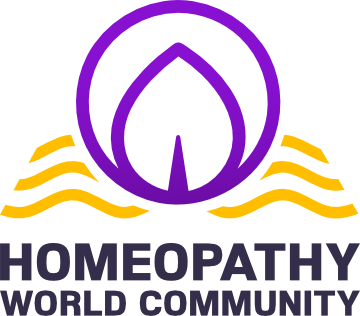Book review: Dr. Gaurang Gaikwad
Materia Medica of Nosodes and Sarcodes with Therapeutic Index
Dr. Gaurang Gaikwad’s book was reviewed
by
Dr. Erzsébet Túrós
Many homeopaths have been asking me the question: Which book should we read for Nosodes and Sarcodes? Now I can finally recommend this extremely informative book which is by far the best book written exhaustively on this subject. Thanks to this great contribution to Homeopathy by Dr. Gaurang Gaikwad, a long existing void has been filled.
Dr. Ashok Borkar
These appreciation words from Dr. Ashok Borkars summarize the importance of this book.
The motivation to write this book according to the author from the Introduction was:
Unfortunately I couldn’t find Clear Indications of many Sarcodes and Nosodes and found that most Homeopaths use it empirically – for e.g. Thyroidinum in Thyroid cases. After using these remedies often and learning from the Masters of Homeopathy like Dr. Vijay Vaishnav, Dr. Sankaran and Dr. Sarkar, I was able to understand the initial patterns of different Nosodes and Sarcodes.
I have tried to put together a collection of Materia Medica of Sarcodes and Nosodes from Different Literatures, Materia Medica, Repertory, Old Journals, Indications and Clinical Tips and especially clinical experiences.
Many cases which do not improve with indicated remedy, have observed to have improved with Sarcodes/ Nosodes. This is when I felt the need to study these remedies in detail for better clinical results.
Dr. Gaurang Gaikwad
The book has 241 pages and contains a chapter of Sarcodes with their definition, a list of 21 sarcodes, the Genius of when to use sarcodes, followed by the presentation in large of each sarcode which includes the effect of sarcode on the body, the clinical diseases in which it can be useful, followed by indications from different Homeopaths and Materia Medicas, like Pulford Materia Medica, Boericke’s Clinical Materia Medica, Dr. Sarkar’s Keynotes, Indian Homeopathic Review, Clarke’s Writings, Robert’s Repertory, Toxicological Symptoms, article from British Homeopathic Journal, clinical cases of Dr. S.C. Ghosh, N. M. Choudhary Writings, Kent Repertory, Blackwood’s Writings, Gosh’s Clinical Indications and also numerous case examples.
The sarcodes presented in book are as follows: Adrenalinum, Cholesterinum, Cortisone, Corticotrophinum, Estrogen, Folliculinum, Histaminum, Insulinum, Malandrinum, Oophorinum, Oxytocin, Parathyroid hormone, Pancreatinum, Pepsinum, Pituitaria glandula, Pituitarium anteriorum, Pituitaria gland posterior, Progesterone, serotonin, Testosterone, Thyroidinum.
The chapter on Nosodes contain 26 nosodes like: Bacillinum Burnett, Carcinosin, Diphterinum, Epiphysterinum, Enterococcinum, Influenzinum, Leprominium, Malaria officinalis, Morbillium, Medorrhinum, OAN, Oscillococcinum, Pneumococcinum, Parotidinum, Pyrogenium, Psorinum, Rongworm, Streptococcinum, Staphylococcinum, Scirrhinum,Syphillinum, Tuberculinum, Tetanotoxinum, Variolinum, AIDS Nosode, Lyssinum.
Tuberculinum he presented exhaustively with Delusions and Dreams Rubric from Repertory, from Kent, Boger, Winans, Clarke, Vannier, Morrison’s Writings, Dr. Sarkar’s keynotes, Pulford’s Clinical Indications, Dr. Sankaran’s Writings and also case examples. He describes 26 different types of Tuberculinums in homeopathy.
Next there is a chapter of Bowel Nosodes with 7 different nosodes like: Morgan pure, Morgan Gaertner, Proteus, Sycotic co, Bacillus Gaertner, Dys co, Bacillus No. 7.
The last chapter of the book contains the Important Rubrics and Therapeutic Index of Sarcodes and Nosodes ( pages 198-240).
The importance and the value of this book is immense, considering that the author presents us everything about all the Nosodes and Sarcodes in one single book, including the source, toxicological symptoms, keynotes, numerous Repertory Rubrics, clinical tips and indications, case example from Homeopathic Journals and from his own experience, in this way we have not to waste time in searching in different literature.
The presentation of Folliculinum by Dr. Gaurang is a pleasure to read, it includes many specific Mind Rubrics also and Clinical Indications, followed by Article from British Homeopathic Journal and a Case Example from his own experience. He describes so wonderful the essence of this remedy:
Folliculinum can help restore the will and re-empower. Folliculinum comes up over and over again in cases where women have been abused sexually, psychically or physically, either now or at any time in the past… The ovary is such an organ of creativity. It simply seethes with life and activity. When it isn’t functioning well creativity can be blocked.
The description of Carcinosin in this book is absolutely fabulous, with numerous rubrics from Repertory, from Morrison’s Writings, Dighty Lectures, Clarke’s Writings, from P. Sankaran, from Situational Materia Medica by Dr. Rajan Sankaran, Cooper’s Writings, followed by 12 cases from Foubister’s Clinical Cases.
Medorrhinum is presented also with the same accuracy with 19 rubrics from repertory only for Cravings, with numerous Mind Rubrics, differential diagnosis with other remedies. He presented here also indications from great Masters: Dr. Sarkar, Dr. Banerjee, C.M Boger, Dr. Vijay Vaishnav, Dr. Burnett Writings, Dr. Allen, Kent’s Writings, Black Letter symptoms of M. L. Tyler, Dr. Rajan Sankaran Writings, Morrison’s Writings. Finally he gives us a list of 22 keynotes of Medorrhinum to remembered.
What could we ask for more?
The only thing that we can do is to be grateful and to thank this young, dynamic Homeopath for his great work and use the information from his book to the benefit of our patients.
I highly recommend this book, it is a must-have for all homeopaths!


